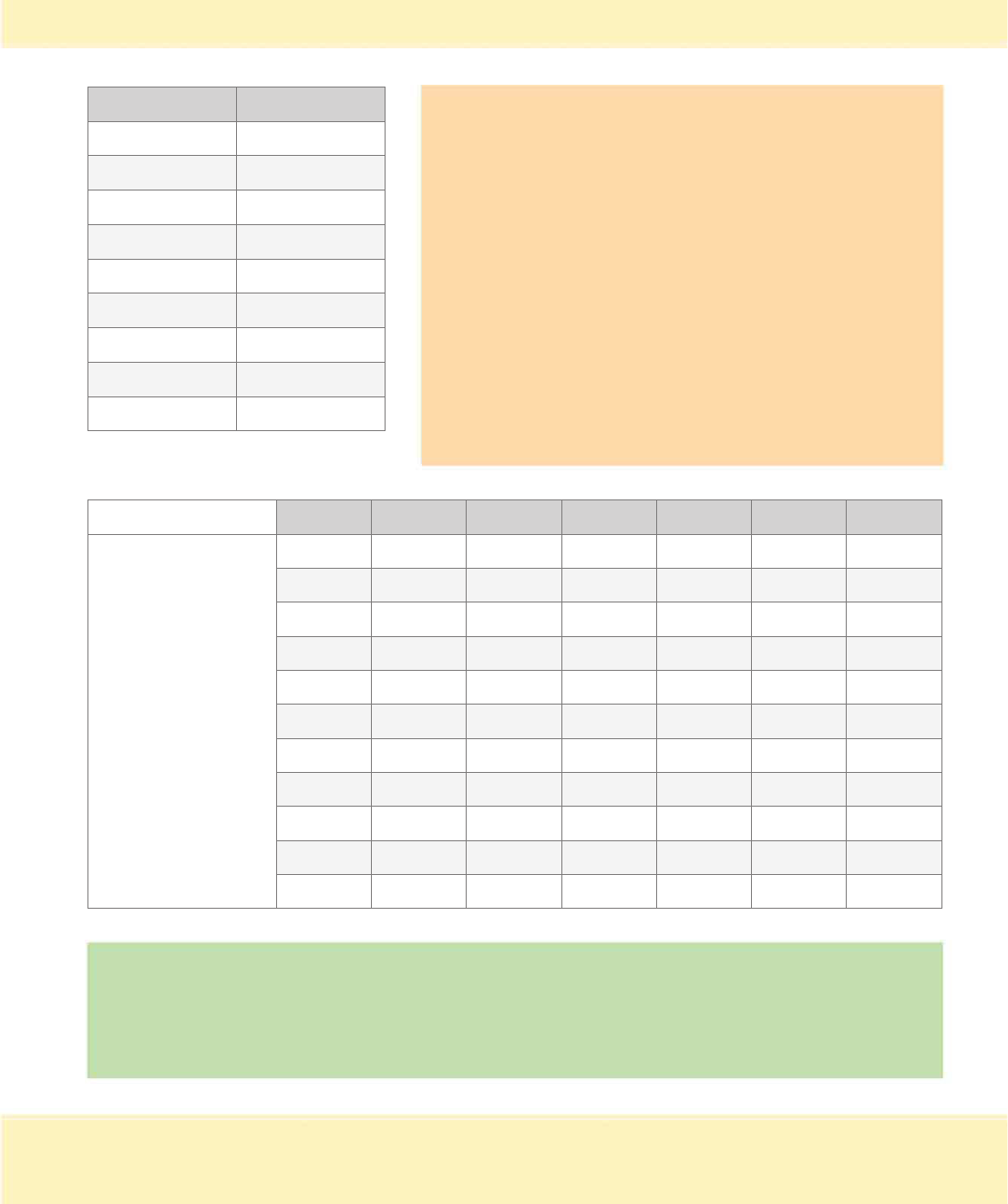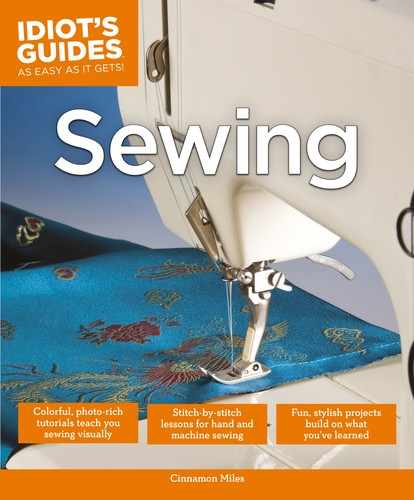
Fabric Defined
Choosing the right fabric can make or break your project. It is essential to under-
stand what makes up a piece of fabric and what it is meant to be used for. There
is a large variety of fabrics out there to choose from, so understanding these ele-
ments will help you to make the right choices for your project.
• The threads that run parallel to the selvage
(lengthwise) are the warp threads. The
threads that run crosswise to the selvage,
and are woven through the warp threads, are
the weft threads.
• The selvage is the finished edge of the
fabric. It is tightly woven and won’t fray, but
generally it has a bit of a different color or is
left unprinted.
• The right side is the outside or finished side
of the fabric—it’s the side you want to be
visible. You can tell which side is the right
side pretty easily on a printed fabric.
• The wrong side is the inside or unprinted
side of the fabric. This is the side that is
unseen on a finished project.
• The bias is the line of the fabric which lies
45 degrees from the selvage and falls
between the lengthwise and crosswise
grains. A woven fabric has a bit of stretch
when cut in the direction of the bias.
Right side
Selvage
Bias
Weft
Warp
Wrong side
10 Part 1: Getting Started
ccCH1_Sewing.indd 10 5/23/13 3:35 PM

Yardage Inches/cm
1
⁄
8
4
1
⁄
2
/ 11.4
1
⁄
4
9 / 23
1
⁄
3
12 / 30.5
3
⁄
8
13
1
⁄
2
/ 34.25
1
⁄
2
18 / 45.75
5
⁄
8
22
1
⁄
2
/ 57
2
⁄
3
24 / 61
3
⁄
4
27 / 68.5
7
⁄
8
31
1
⁄
2
/ 80
1 yard = 36 inches (91.5 cm)
Fabric Width 35-36" 39" 41" 44-45" 50" 52-54" 60"
Yardage
1
3
⁄
4
1
1
⁄
2
1
1
⁄
2
1
3
⁄
8
1
1
⁄
4
1
1
⁄
8
1
2 1
3
⁄
4
1
3
⁄
4
1
5
⁄
8
1
1
⁄
2
1
3
⁄
8
1
1
⁄
4
2
1
⁄
4
2 2 1
3
⁄
4
1
5
⁄
8
1
1
⁄
2
1
3
⁄
8
2
1
⁄
2
2
1
⁄
4
2
1
⁄
4
2
1
⁄
8
1
3
⁄
4
1
3
⁄
4
1
5
⁄
8
2
7
⁄
8
2
1
⁄
2
2
1
⁄
2
2
1
⁄
4
2 1
7
⁄
8
1
3
⁄
4
3
1
⁄
8
2
3
⁄
4
2
3
⁄
4
2
1
⁄
2
2
1
⁄
4
2 1
7
⁄
8
3
3
⁄
8
3 2
7
⁄
8
2
3
⁄
4
2
3
⁄
8
2
1
⁄
4
2
3
3
⁄
4
3
1
⁄
4
3
1
⁄
8
2
7
⁄
8
2
5
⁄
8
2
3
⁄
8
2
1
⁄
4
4
1
⁄
4
3
1
⁄
2
3
3
⁄
8
3
1
⁄
8
2
3
⁄
4
2
5
⁄
8
2
3
⁄
8
4
3
⁄
4
4 3
7
⁄
8
3
5
⁄
8
3
1
⁄
4
2
7
⁄
8
2
3
⁄
4
5 4
1
⁄
4
4
1
⁄
8
3
7
⁄
8
3
3
⁄
8
3
1
⁄
8
2
7
⁄
8
11Chapter 1: Before You Begin
Note: You might need to adjust the amounts for fabrics that have stripes, plaids, or large prints so
the pieces line up. Also, if you’re extending one measurement and narrowing another, check to be
sure that the width of your pattern pieces will still fit on the piece of fabric.
Yardage Conversion Chart
Fabric is available to purchase in a variety of widths. It
is rolled onto bolts; you take the bolts to a cutting coun-
ter to have the specific amount needed measured and
cut off the bolt.
Sewing patterns have charts that specify the amount of
fabric needed. Most yardage measurements will be for
a standard 44- to 45-inch-wide fabric. But what should
you do if you want to use a fabric that is, for example,
60 inches wide? The chart below will help you to make
easy conversions if you plan to use a fabric that comes
in a different width.
ccCH1_Sewing.indd 11 5/23/13 3:35 PM
..................Content has been hidden....................
You can't read the all page of ebook, please click here login for view all page.
